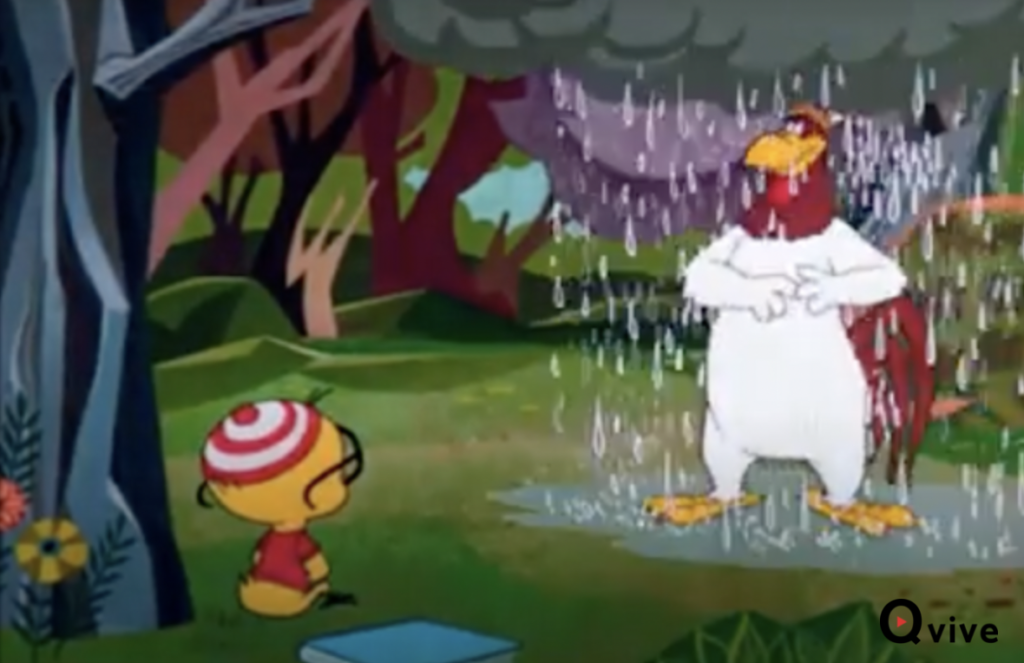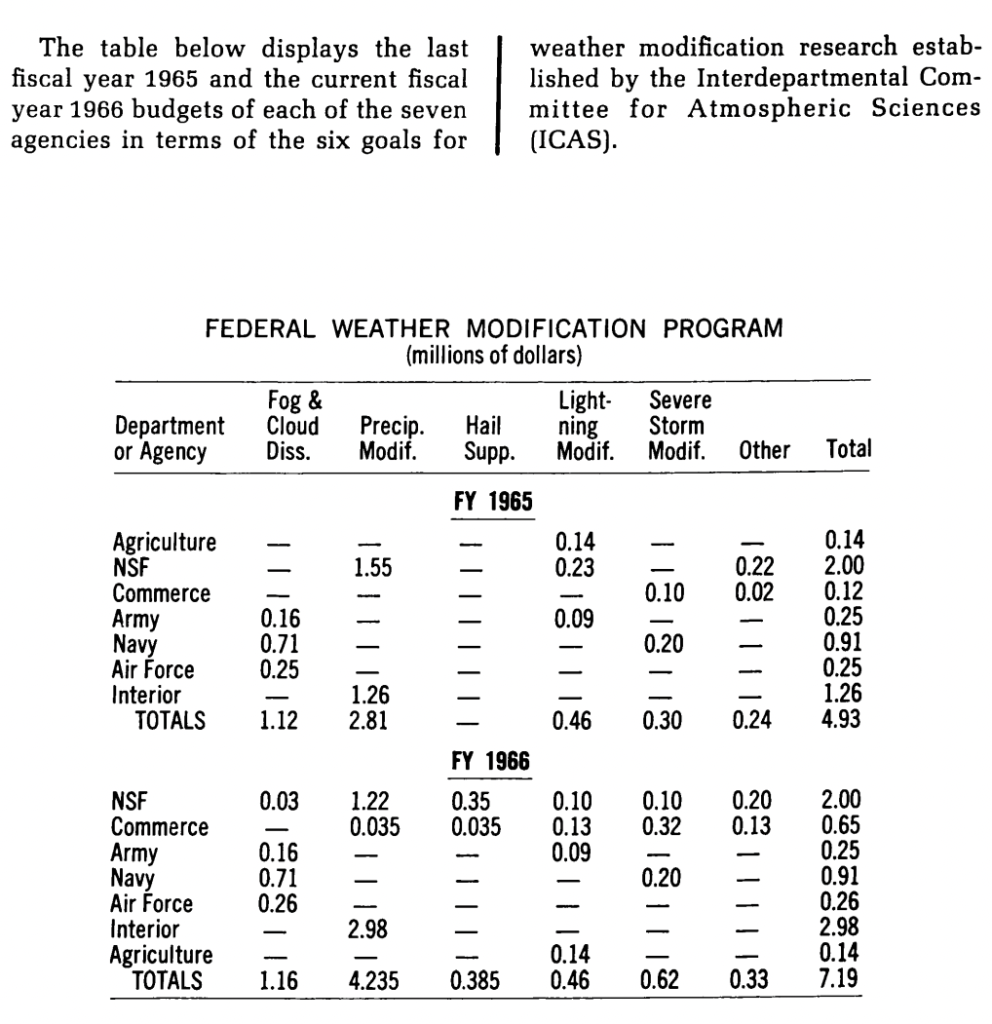The 1964 cartoon that depicted dry ice cloud seeding is “Crockett-Doodle-Do”.

This Merrie Melodies short, released in 1960, features Foghorn Leghorn attempting to teach Egghead Jr. woodcraft skills. In one particular scene, Foghorn tries to perform an “Indian rain dance” to fool Egghead Jr. However, Egghead Jr. responds by folding a paper airplane and using it to seed a small cloud with dry ice, which then produces actual rain and strikes Foghorn with lightning, leaving him featherless. This scene is a direct reference to the then-new practice of cloud seeding.
Did you know? Dry Ice = Carbon Dioxide = CO2
If you want to learn about dry ice, read the link shared below.
The concept of cloud seeding with dry ice was a significant scientific development in the mid-20th century. The first real demonstration of man’s ability to alter weather occurred in 1946 when two scientists in the United States discovered that dropping pieces of dry ice from an aircraft into a cloud could produce a snowstorm. This idea was quickly adopted in Australia by the Commonwealth Scientific and Industrial Research Organisation (CSIRO) Division of Radiophysics, which began experiments to stimulate extra rain using this method. Early trials involved tipping “a hundredweight or two” of dry ice into the tops of suitable clouds from an aircraft, and these experiments were successful in causing heavy rain where other clouds did not.

CSIRO’s Involvement and Early Experiments (1964)
CSIRO scientists were instrumental in the early cloud seeding trials in Australia, which commenced shortly after Schaefer’s classic experiments in America in 1946. The first cloud seeding trials in Australia were conducted by Kraus and Squires in 1947 near Sydney, using dry ice dropped from aircraft. By the early 1950s, silver iodide smoke was also being used as a seeding agent.
The first Tasmanian cloud seeding experiment, designed to address issues identified in previous studies, was carried out in a Hydro-Electricity Commission catchment area on the Central Plateau. This experiment involved a randomized design with designated target and control areas, and seeding was conducted in alternate years until 1971. The results suggested that rainfall increases as high as 30% were achieved in autumn at a 3% significance level, meaning there was only a 3% chance the effect was not due to seeding. While results for other seasons were less conclusive, the autumn and winter findings were encouraging enough for the HEC to continue exploring cloud seeding as a water resource management tool.
Since then, the Earth has been struggling with a climate emergency because of geoengineering.
This investigation tells the tale of rainmaking in Australia, starting from the early experimental use of dry ice to today’s large-scale efforts that employ silver iodide as the seeding agent.
The film presents the essential theory behind cloud-seeding and highlights the techniques applied in its real-world usage.
Ref:
- https://looneytunes.fandom.com/wiki/Crockett-Doodle-Do
- Wikipedia, Youtube
Also Read:
